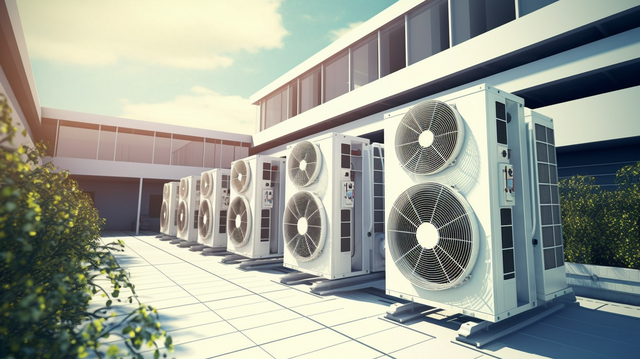
Sight Glass
In the design and manufacturing of vapor-compression refrigeration systems, such as chillers and mini chillers, monitoring the condition of the refrigerant in terms of moisture content, phase, and purity is of great importance.
One of the key components that enables engineers and technicians to quickly and accurately assess system conditions is the Sight Glass.
Although simple in appearance, this small device plays a vital role in ensuring safe and stable system operation.
The sight glass is typically installed on the liquid line, between the condenser outlet and the expansion valve inlet, allowing direct observation of refrigerant flow.
Structure and Function
A sight glass consists of a durable metal body and a high-strength glass window, both designed to withstand high pressure and temperature.
Inside the unit, a moisture indicator is incorporated to display the level of humidity in the refrigeration circuit through a color change.
- Under normal dry conditions, the indicator appears green, showing that the refrigerant is moisture-free.
- When moisture is present, the color changes to yellow or orange, warning that the filter drier may have lost efficiency or the system may have a leak.
This feature makes the sight glass not only a visual inspection tool but also an essential diagnostic device for monitoring the health of the refrigeration circuit.
Installation Location
The sight glass must be installed at the condenser outlet, after the filter drier, so that the condition of the purified refrigerant can be inspected before it enters the expansion valve.
Proper installation — maintaining the correct flow direction, vertical position, and distance from vibration sources — is essential.
For outdoor systems, thermal insulation and protection from direct sunlight are recommended to prevent temperature variations from affecting the visibility or accuracy of the indicator.
Applications
- Refrigerant Charge Monitoring:
Continuous bubbles observed in the sight glass may indicate low refrigerant charge or insufficient condenser pressure.
A clear, bubble-free flow signifies proper system operation. - Moisture Detection:
A color change from green to yellow indicates moisture presence in the system.
Moisture can lead to acid formation, ice blockage at the expansion valve, and serious compressor damage. - Service Quality Verification:
After refrigerant charging or component replacement, the sight glass serves as a reliable tool to verify correct system operation.
By observing refrigerant flow and color, the technician can ensure the circuit’s integrity.
Selecting the Proper Sight Glass
In professional chiller and mini chiller design, the sight glass type and capacity must be chosen according to the system’s operating conditions.
Key selection parameters include:
- Maximum working pressure suitable for the refrigerant (up to ~45 bar for R410A)
- Chemical compatibility with the refrigerant and compressor oil
- Connection size matching the liquid line diameter
- Connection type: soldered for mini chillers, and flanged or threaded for larger chillers
- Built-in moisture indicator for easier servicing and troubleshooting




